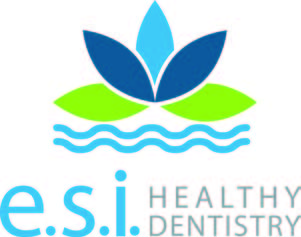Light is life. It is natural. It is everywhere. Why not in oral healthcare? Let me shed some light on it.
We use a focused blue light when we do white fillings. That is how the composite resin paste turns into a hard filling material. Light is used for diagnosis of disease. Velscope is an enhanced oral cancer screening tool. It uses fluorescence to detect abnormalities beneath the surface of the gums, lips, cheeks, tongue, palate and pharynx. Intraoral cameras use light so that we can take photographs of the inside of the mouth so that we can show patients, third parties and other health care providers our clinical findings. Transilluminators are fiber optic instruments that produce a high intensity white light that is focused on a small probe which is used to detect small cavities. This is a wonderful adjunct technique to see if we need to do a filling or if we can remineralize a weak area of the tooth.
Computer aided design / computer aided milling (CAD/CAM) is something that has been used in engineering and architecture for decades. Dentistry has adopted this technology which incorporates light to create dental restorations such as custom-made large filling and crowns. Almost everyone has experienced dental impressions where a putty-like material is placed in the mouth and is removed after it sets several minutes later. Many people cannot tolerate this material as it can cause gagging. With this technology, a tiny camera is used inside the mouth to capture images of your teeth and a digital, optical impression scan is acquired. No messy impression materials, no waiting, no gagging; and it’s very accurate. Digital dental restorations can be lab fabricated or milled in-house. This technology is used for mouth guards, retainers, clear aligners (to straighten teeth) and surgical guides for a more comfortable, accurate and faster implant treatment.
Lasers use light for diagnosis and treatment. Diagnostic lasers can help detect hidden cavities on pits and fissures of teeth. Biostimulation is a fantastic phenomenon that recruits immune cells in an area to accelerate healing and reduce inflammation. A low wavelength laser is utilized around the area of interest like a canker sore, a gum pocket or the TMJ (temporomandibular joint) reducing the recovery time by more than 50%.
For periodontal treatment, lasers are a great option in addition to conventional treatment to enhance patient outcomes and results. They help with debridement, disinfection and elimination of disease and inflammation. For non-surgical endodontic treatment, lasers offer photoninduced photoacoustic streaming and laser assisted irrigation for a 3D cleansing of root canal systems with higher success rate. There are other applications for lasers such as oral plastic surgery, desensitization of teeth, and even treatment of cavities.
Although it has lost popularity, in-office one visit whitening can be enhanced with a special bright light. The gel has photo initiators in it which speeds up the whitening process. This is not my favorite way to whiten teeth as it can cause temporary yet severe sensitivity to cold, but more importantly, the immediate whitening effect diminishes after a few days. Reason being, the teeth get dehydrated and appear whiter but once they rehydrate the color returns to its true shade.
One of the most important vitamins for your bones, teeth and immune system is vitamin D. We produce it when we have exposure to sunlight. Now that the weather is improving, do your body a favor and go out there and get some light. Here’s to your perpetually improving health!
 Jimmy Kilimitzoglou, DDS, FACD, FPFA, DABOI, MAGD, FAAID, FICOI ESI Healthy Dentistry 42 Terry Road, Smithtown, NY 11787 Tel (631) 979 7991 / Fax (631) 979 7992 dental@esihealthydentistry.com www.esihealthydentistry.com
Jimmy Kilimitzoglou, DDS, FACD, FPFA, DABOI, MAGD, FAAID, FICOI ESI Healthy Dentistry 42 Terry Road, Smithtown, NY 11787 Tel (631) 979 7991 / Fax (631) 979 7992 dental@esihealthydentistry.com www.esihealthydentistry.com
– A D V E R T O R I A L –




















